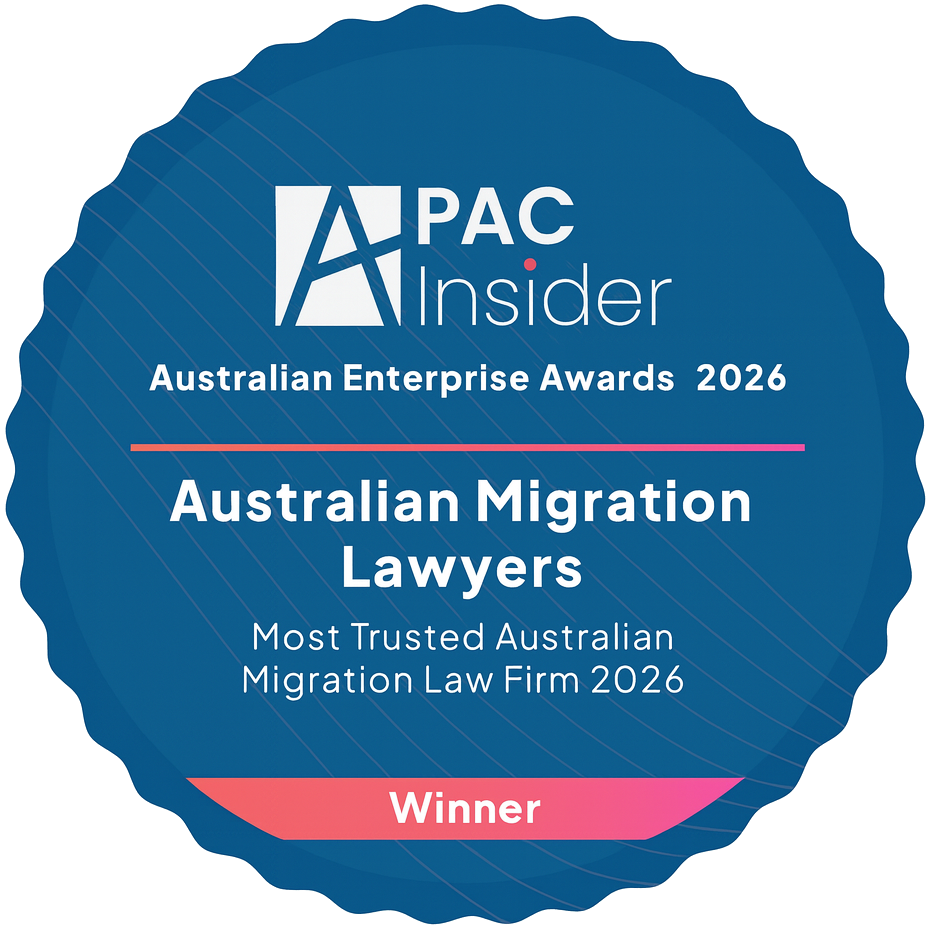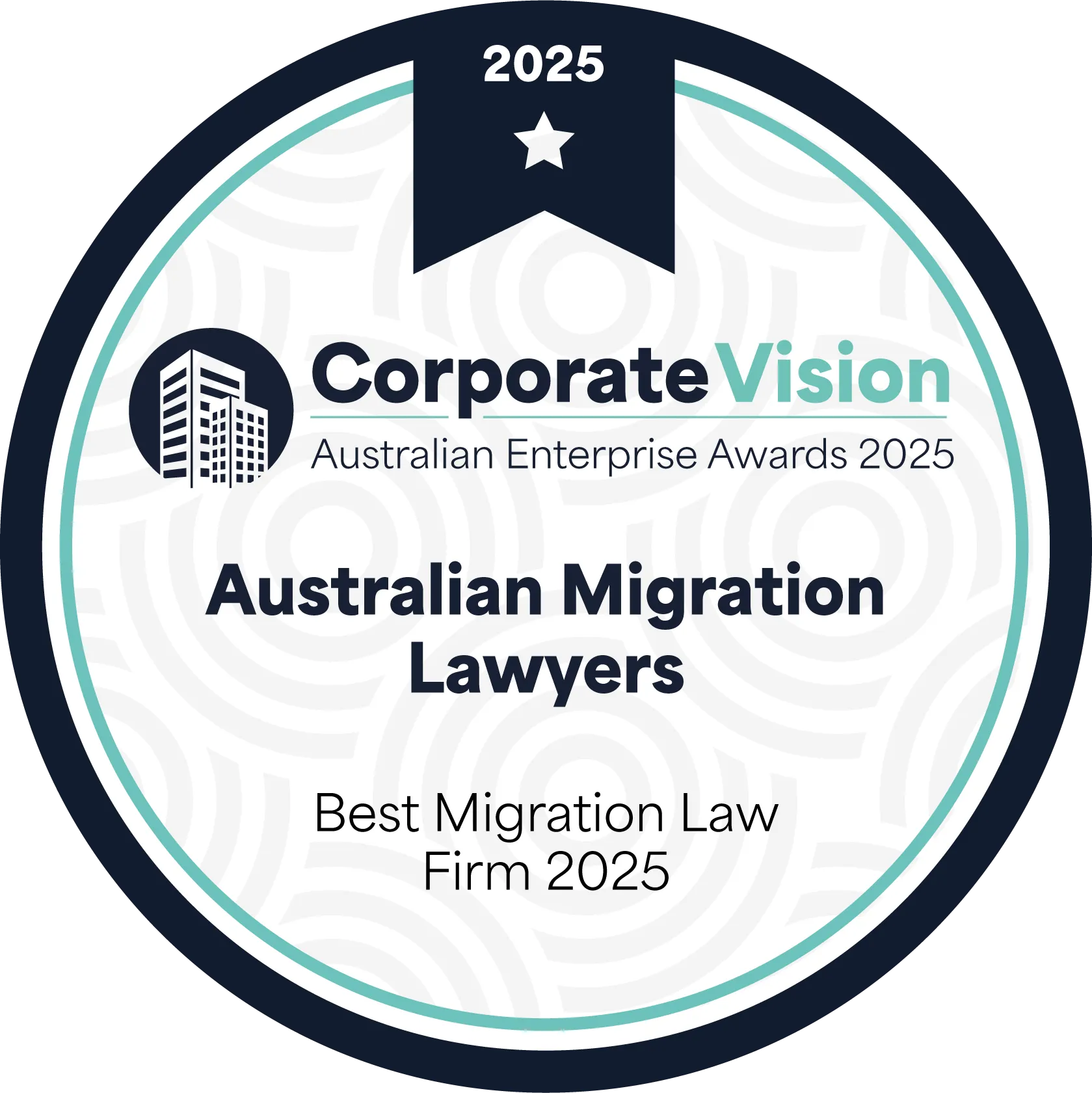Australia's largest independent migration law firm. Open 7 days! Book here.
Need help? We are available 7 days a week.

.webp)

Winner of Most Trusted Australian Migration Law Firm 2023-2026

Ranked 1st for migration law in 2023, 2024 & 2025

Ranked in the top migration lawyers 2023, 2024 & 2025

Ranked the best migration law firm 2024 & 2025

UPDATE !!! The Temporary Skill Shortage (subclass 482) has been replaced by the Skills in Demand Visa (subclass 482) on December 7 2024.
This visa allows skilled individual applicants to work in Australia for a maximum period up to four years under the sponsorship of an approved employer. Its purpose is to mitigate labour shortages within the Australian market by facilitating the relocation of eligible workers in a nominated occupation to fill vacant roles.
Introduced in March 2018, the TSS visa replaced the Temporary Work (Skilled) (subclass 457) visa and has since become one of the most commonly used employer-sponsored visas in Australia. The broad purpose of these visas is allowing employers encountering challenges in sourcing local workers by empowering them to sponsor eligible overseas individuals for positions they cannot fill. The TSS visa reflects the Australian Government’s endeavours to strike a balance between addressing skill shortages through skilled migration and safeguarding local employment opportunities, working conditions and wages within the same occupation type in Australia. TSS visa holders are allowed to remain in Australia for up to four years. Notably, there is no limit or cap on the amount of TSS visa holders or visas granted in any given migration program year.
The TSS visa scheme consists of three distinct streams (Short Term, Medium Term and Labour Agreement Streams). The Short Term stream (TSS visa) allows eligible skilled workers to remain in Australia for up to two years. The Medium Term stream (TSS visa) allows for eligible workers to remain in Australia for up to four years. The Labour Agreement stream (TSS visa) also allows eligible skilled workers to remain in Australia for up to four years, however, this stream is contingent upon the sponsoring employer having an established Labour Agreement with the Australian Government.
Additionally, the TSS visa does accommodate applications from 482 visa holders’ family members (such as a spouse, de facto partner or dependent children) either at the same time or after the primary applicant, allowing them to join the primary visa holder in Australia.
[aml_difference][/aml_difference]
The process for applying for TSS visas can be time consuming and occurs over multiple stages. A visa applicant will need the support of their employer in order to apply for a TSS (subclass 482) visa.
Before applicants are able to lodge their TSS visa applications, a sponsoring employer will need to satisfy various sponsorship and nomination requirements. In order to sponsor an eligible overseas applicant, the employer must hold Standard Business Sponsor status. This status lasts for five years and will only need to be satisfied the first time an employer seeks to sponsor an applicant. A sponsoring employer does not need to remain a Standard Business Sponsor to employ a TSS applicant, but must be one when they lodge a nomination.
The second stage is the nomination, which primarily involves outlining the details of the position, satisfying the Labour Market Testing requirements set by the Department, and determining what the annual market salary rate is for the nominee. A nomination is valid for 12 months from the date of approval, during which the applicant must apply for their visa. A nomination must be undertaken each time a sponsoring employer nominates an eligible overseas employee.
Once the sponsoring Australian employer has satisfied the sponsorship requirements and lodged a valid nomination, an applicant is able to proceed with their application. An applicant will be required to undergo various assessments including health and character requirements, demonstration of competent english and skills testing in limited circumstances. TSS applicants will then be required to gather all of the necessary documentation to support their application and submit it through the designated portal on the Department of Home Affairs website. Once the application has been received by the Department they may request that an applicant provide additional information or undergo other requirements. Once a decision has been made on the application, the Department will notify an applicant in writing.
Should applicants or sponsoring employers need assistance with the TSS visa application process, an Australian Migration Lawyer is well-equipped to provide support and guidance during this period.
There are several documents which an applicant is required to provide when applying for a TSS visa. These include:
Any documents that are in a language other than English must be translated into English with both documents attached to your application.

In establishing their eligibility to be a Standard Business Sponsor, sponsoring employers will be required to provide evidence including:
To apply for a nomination, sponsoring employers will need to include the following documents in their application:
Sometimes, additional documents may be required to be submitted with an application. These can include:
As stated above, the application process for a TSS visa occurs over multiple stages and can take time. At each stage, when the sponsoring employer or applicant is ready to submit and has gathered all of the relevant documents, nominations and applications can be lodged online through the designated portal provided by the Department. This is also where sponsoring employers and applicants can pay the various fees and charges associated with the visa application process.
Once an application has been submitted, the Department will take time to review it. Applicants should be aware that the Department does not provide status updates on the progress of an application.
Sometimes, the Department will request additional documents or further information in relation to the application. They also can request that an applicant fulfils various additional requirements such as providing biometric data. However, the Department is not under any obligation to do this, and applicants should be aware that the Department reserves the right to make a decision on the information which has initially been provided to them.
If an applicant’s circumstances have changed, or a mistake in the application has been discovered, applicants should notify the Department as soon as possible. A mistake can be corrected via the submission of a Form 1023 notification of incorrect answers.
Once the department has made a decision, the applicant will be notified of the outcome. If an application is successful, the applicant will become a valid TSS visa holder and receive their grant number, the date the visa begins and any visa conditions (such as the requirement to obey Australian laws). If an application is refused, the Department will inform the applicant of the reasons for the refusal and any avenues of review that are available. Applicants and Sponsoring employees will not be refunded any application fees if the Department refuses an application.
The process of applying for a TSS visa can be confusing, often resulting in mistakes being made. These mistakes can affect the outcome of any application, so it is important that they are minimised where possible. Some of the common mistakes include:
As this post has detailed, the process for applying for a TSS application can be complex and inherently presents pitfalls for applicants and sponsoring employers. This includes considerations about what documents need to be provided to the Department and when they need to be provided. While applicants and sponsoring employers can navigate this process alone, professional assistance from an Australian Migration Lawyer can help prevent mistakes, clarify the visa application process and provide guidance to ensure a smooth and successful 482 TSS visa application. This includes helping to ensure that sponsoring employers meet the eligibility requirements to nominate an eligible applicant, as well as ensuring applicants provide the correct documentation and forms to the department. An Australian Migration Lawyer’s assistance also extends to subsequent communications with the department and advice in relation to a visa application outcome. Furthermore, while a TSS (subclass 482) visa holder is not a permanent resident, an Australian Migration Lawyer can advise on different permanent residency pathways. One such pathway to permanent residency is via the Employer Nomination Scheme (Temporary Residence Transition (TRT) stream) as exciting changes on 25 November 2023 provided more equitable access to permanent residence, however there are several common pathways that are available, which an Australian Migration Lawyer can help explore if necessary.
[aus_wide_service][/aus_wide_service]

We have created comprehensive visa guides that outline the ins and outs of visa applications. Get yours today.